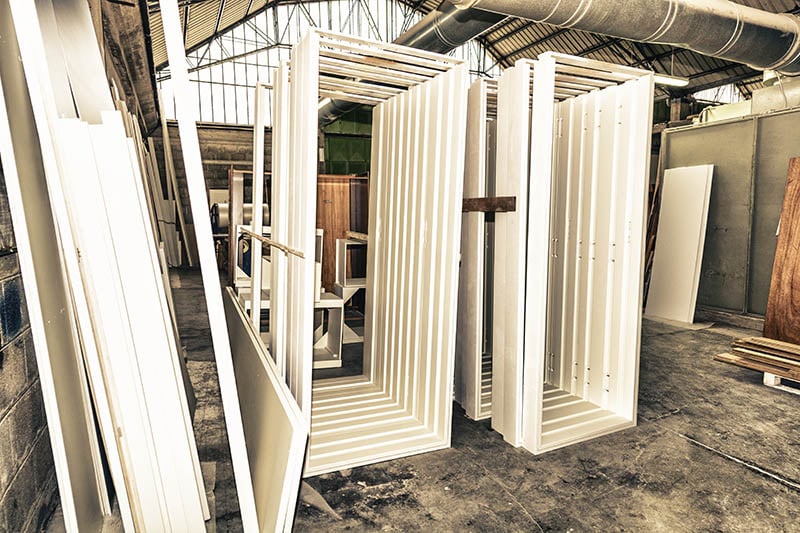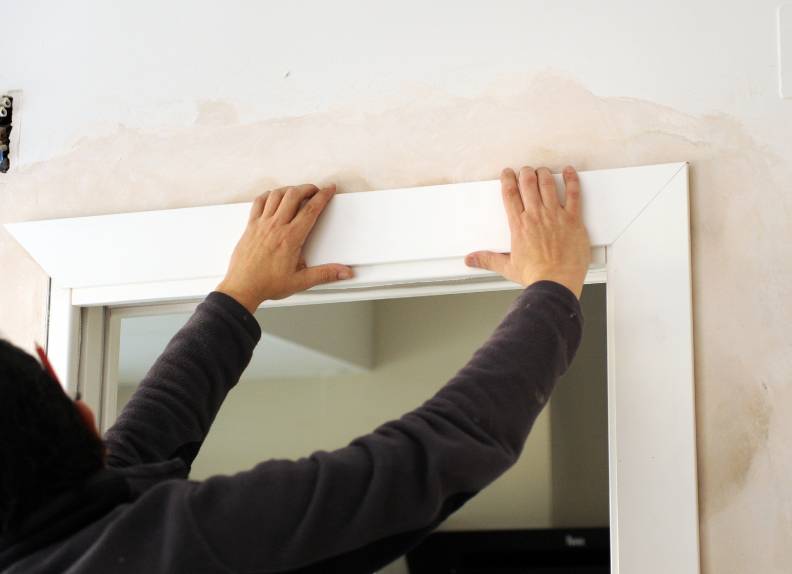How Tall Is a Door Frame? Measuring, Installation, & FAQ
-
Pete Ortiz
- Last updated:

Unless the door frame is broken, worn-out, or sagging, it’s practically invisible. It’s just there to hold the door in place. But what if it’s shifted, and now it’s a pain to open and close the door? Or maybe it’s not causing any trouble, but you still want to replace the door. So, how do you get the right size? How tall should the frame be? In the States, door frames are 82 inches tall.
The jambs can be much taller or shorter, though. Essentially, the frame size is the door size plus 2 to 2.5 inches. Join us, and let’s talk about the various door frame heights and widths, how they compare to door sizes, the difference between building codes in various countries, and more!
What Is a Door Frame? Breaking It Down
Also known as the framework or the jamb, the frame has a very important job: to support the door with a hinge set. In most cases, it’s made of wood but can also be crafted from concrete, aluminum, or fiberglass. The frame consists of three parts: the jambs on each side and the head. Sometimes, the sill (the slab that sits at the foundation of the door) is also included, but mostly, it’s the sides and the top.
Frames are specifically designed to blend with the door and the walls. On top of that, they are manufactured to be sturdy, durable, and capable of holding the door. Depending on its size, the door can be quite heavy (up to 100 pounds or more). Make sure the frame is strong enough and can handle the weight!

So, What’s the Right Height for a Frame?
Here’s the most important part: the size of the frame is NOT the same as the size of the door.
To give you an example, 80 inches is a common door height in the US. However, if you buy a frame that’s 80 inches tall, you won’t be able to fit it properly because it won’t be tall enough. The side jambs won’t cause any issues, but the head jamb won’t have enough headroom.
To avoid that, add 2/2.5 inches to the height of the frame compared to the door. Thus, if the door is rated at 80 inches, the frame needs to be 82 inches tall. In some cases, the difference in height can vary (and go from 1.5 to 2.5 inches), but, for the most part, as long as the framework is 2.5–3% taller, that should do the trick. This is called rough-in measurement and should always be taken into consideration.
The Width: How Do You Figure It Out?
The deal with the width is the same—it needs to be slightly wider than the door. Again, a 2-inch difference makes most door–frame combinations work. This is true for both single-door and double-door units. However, if you’ve got a fancy double door with an astragal, make sure the framework is 2.5 inches wider. That means an 80-inch door should have an 82.5-inch frame.
With French doors, use a different formula: multiply the width of the door by two and then add two inches. This only applies to the width. For the height, just add 2.5 inches, and that should do it. Finally, when working with sliding doors, measure the width manually. For the width, go from stud to stud; for the height, measure from the sill to the head.

Measuring the Door: A Step-By-Step Guide
Before you calculate the size of the frame, you need to know exactly how big or small the door is. Don’t worry: it will only take a couple of minutes to measure it. Grab a measuring tape and run it from top to bottom. If it’s an older door, it might be sagging a bit. In that case, measure it in at least two spots to get an accurate “reading” and use the higher number.
When measuring the width, go from the left side of the door to the right one. Do NOT include the casing, weather stripping, or any other elements. Again, just like with the height, measure it in 2–3 different spots. To figure out the thickness, press the tape onto the door’s edge. Most likely, it’s going to be 1.75 inches.
Common Door Sizes: A Detailed Chart
Alright, now that we learned how to measure door frames properly, here’s a quick look at the most prevalent door heights:
- 78” (rare, but common in some states)
- 80” (the most dominant height)
- 84” (popular in older homes)
- 96” (found in many newly-built homes)
- 109” (intended for luxury homes)
As for the width, the most common sizes are:
- 30” (for interior doors)
- 32” (for double doors)
- 36” (the most common width)
- 42” (for exterior doors)
- 48” (meant for a pivot system)
Doors can be much narrower, too, and go as low as 24 inches, but these sizes aren’t as often used. And sometimes, you’ll see measurements in feet, like 2’6”, 2’8”, and 3’. If you want to order doors online or from a local company, always double-check the width and the height before you sign any papers or pay for the door(s).
Are Doors Smaller in the EU and the UK?
In the States, 30” x 80” interior doors and 36” x 80” exterior doors are leading the market. But what about the rest of the world? Take a look at our size chart for different countries:
- In the United Kingdom, the golden standard is 30” x 78”
- In India, you’ll find 36” x 84” to be the most common size
- South African homes usually have 32” x 80” doors
- The same goes for Canada and Australia: 32” x 80”
Door Frame vs Trim: What’s the Difference?
You could say that both the framework and the trim are parts of the same structure. However, it’s the frame (the jambs) that’s doing all the hard work. The door is attached to the frame, not the trim. An average-sized door needs a pair of hinges to hold it in place and make sure it opens and closes smoothly. So, what’s the purpose of the trim, then—do you really need it?
Also known as door casing, it’s nailed to the frame for decorative purposes. The trim does a great job of hiding the imperfections between the walls and the jambs, ensuring a smooth transition. Therefore, while you won’t be able to install and use a door without a frame, the trim is more of an “extra” than a necessity.
Installing a New Frame: How Much Will That Cost?
This largely depends on the size, style, and materials used for the frame. For example, jambs and heads manufactured from softwoods are a low-budget and user-friendly option. Glass, on the other hand, is rather costly. Framework for a French door will be on the expensive side, while standard single-door frames are much more affordable. Interior frames are cheaper than exterior ones, by the way.
On average, expect to pay $200–700 to have the old frame replaced. Contractors charge $70–120 per hour and usually get the job done in 2–3 hours. And if the workers have to deal with a damaged door opening or replace the hinges, you’ll have to pay more for that. It would be wise to get estimates or even quotes from several contractors before making a commitment.

Can You Build the Frame Manually?
Technically, yes, if you have basic DIY skills, this can be done. All you’ll need to do is cut plywood and nail it to the wall at the right spots. Do keep in mind, though, that you’ll still have to buy the materials for the frame. On top of that, this gig will involve using a screwdriver/drill, hammer, knife, saw, crowbar, and a set of nails + screws, not to mention protection for the hands and eyes.
So, you’ll only be saving on the labor ($140–360). And one more thing: if you don’t want to deal with the frame, you can always buy a pre-hung door. It comes attached to a frame and takes zero time to put together. On the downside, it will be rather heavy and require two pairs of hands to install. In contrast, doors that don’t have a frame are called slab doors. They’re cheaper and easier to work with.
Conclusion
If you’re tired of the old door frames and want to replace them, it’s very important to get the size right. Otherwise, it simply won’t fit! Unfortunately, most homeowners only check the size of the door and overlook the width and height of the framework. As a result, they end up buying a set of jambs that are either too short or tall.
Today, we checked out the standards for door frame heights in the US, the UK, and other countries. We also learned how to properly measure a door frame using a regular measuring tape. Yes, it can be a bit tricky to determine the frame height, but with the help of our guide, we’re confident that you’ll get everything right!
Featured Image Credit: dade72, Shutterstock
Contents



